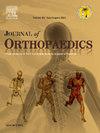合理规划切除深度可影响机器人全膝关节置换术后的疗效
IF 1.5
Q3 ORTHOPEDICS
引用次数: 0
摘要
在计划和实施成功的全膝关节置换术时有许多因素需要考虑。其中之一,骨切除的数量,部分取决于患者的解剖结构和术前畸形。利用术中技术,如机器人技术,可以准确地完成切除。因此,本研究的目的是探讨胫骨&;股骨切除深度和术后结果。此外,还开发了一种用于术前确定所需切除深度水平的定量方法。方法对包含107例机器人全膝关节置换术的数据集进行回顾性分析。我们回顾了术前人口统计、术前计划细节和膝关节学会评分系统的分量表评分。进行分析以发现与子量表得分的显著关联。此外,还建立了多元回归模型来预测切除深度值。结果股骨切除术深度与满意度之间存在相关性;术后3个月功能评分。此外,当使用天然下肢对准策略而不是机械下肢对准策略时,满意度和功能分别提高6%和16%。男性的三个月功能评分也比女性高6%。预测切除深度的模型包括对齐策略、术前膝关节畸形和性别。结论胫股切除深度影响术后疗效。因此,了解哪些因素决定了应该切除多少骨头是很重要的。有了这些信息,就可以制定针对患者的术前计划,以优化术后结果。本文章由计算机程序翻译,如有差异,请以英文原文为准。
Appropriately planned resection depth can impact outcomes after robotic total knee arthroplasty
Introduction
There are many factors to consider while planning and executing a successful total knee arthroplasty. One of these, the amount of bony resection, is determined in part based on the patients’ anatomy and preoperative deformity. Utilizing intraoperative technology such as robotics allows for resection to be done accurately. Therefore, the goal of this study was to investigate the relationship between tibial & femoral resection depths and postoperative outcomes. Additionally, a quantitative method for preoperatively determining the level of resection depth needed was developed.
Methods
A de-identified dataset containing 107 robotic total knee arthroplasty cases was reviewed. Preoperative demographics, preoperative planning details, and sub-scale scores from the Knee Society Scoring System were reviewed. Analysis was performed to find significant associations with the sub-scale scores. Additionally, multiple regression models were developed to predict resection depth values.
Results
Associations were found between femoral resection depth and Satisfaction & Function scores three months postoperatively. Additionally, Satisfaction and Function were 6 % and 16 % higher respectively when the native alignment strategy was used rather than mechanical alignment of the lower limb. Three-month Function scores were also 6 % higher for males than females. The models to predict resection depth included alignment strategy, preoperative knee deformity, and gender as the significant contributors.
Conclusion
Tibial and femoral resection depth can influence postoperative outcomes. Therefore, it is important to understand what factors contribute to the determination of how much bone should be resected. With that information, patient-specific preoperative plans can be developed with the intent of optimizing postoperative outcomes.
求助全文
通过发布文献求助,成功后即可免费获取论文全文。
去求助
来源期刊

Journal of orthopaedics
ORTHOPEDICS-
CiteScore
3.50
自引率
6.70%
发文量
202
审稿时长
56 days
期刊介绍:
Journal of Orthopaedics aims to be a leading journal in orthopaedics and contribute towards the improvement of quality of orthopedic health care. The journal publishes original research work and review articles related to different aspects of orthopaedics including Arthroplasty, Arthroscopy, Sports Medicine, Trauma, Spine and Spinal deformities, Pediatric orthopaedics, limb reconstruction procedures, hand surgery, and orthopaedic oncology. It also publishes articles on continuing education, health-related information, case reports and letters to the editor. It is requested to note that the journal has an international readership and all submissions should be aimed at specifying something about the setting in which the work was conducted. Authors must also provide any specific reasons for the research and also provide an elaborate description of the results.
 求助内容:
求助内容: 应助结果提醒方式:
应助结果提醒方式:


